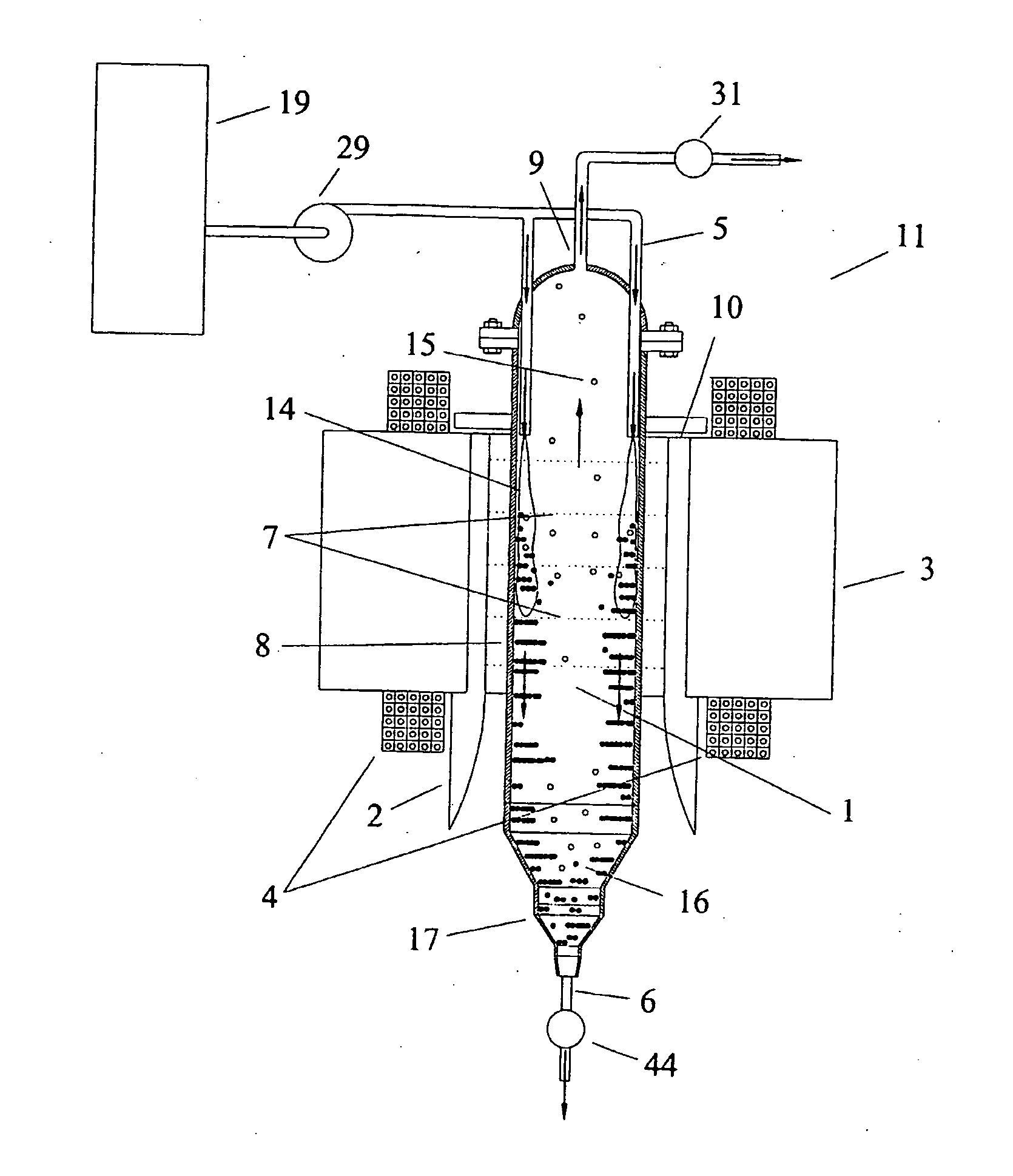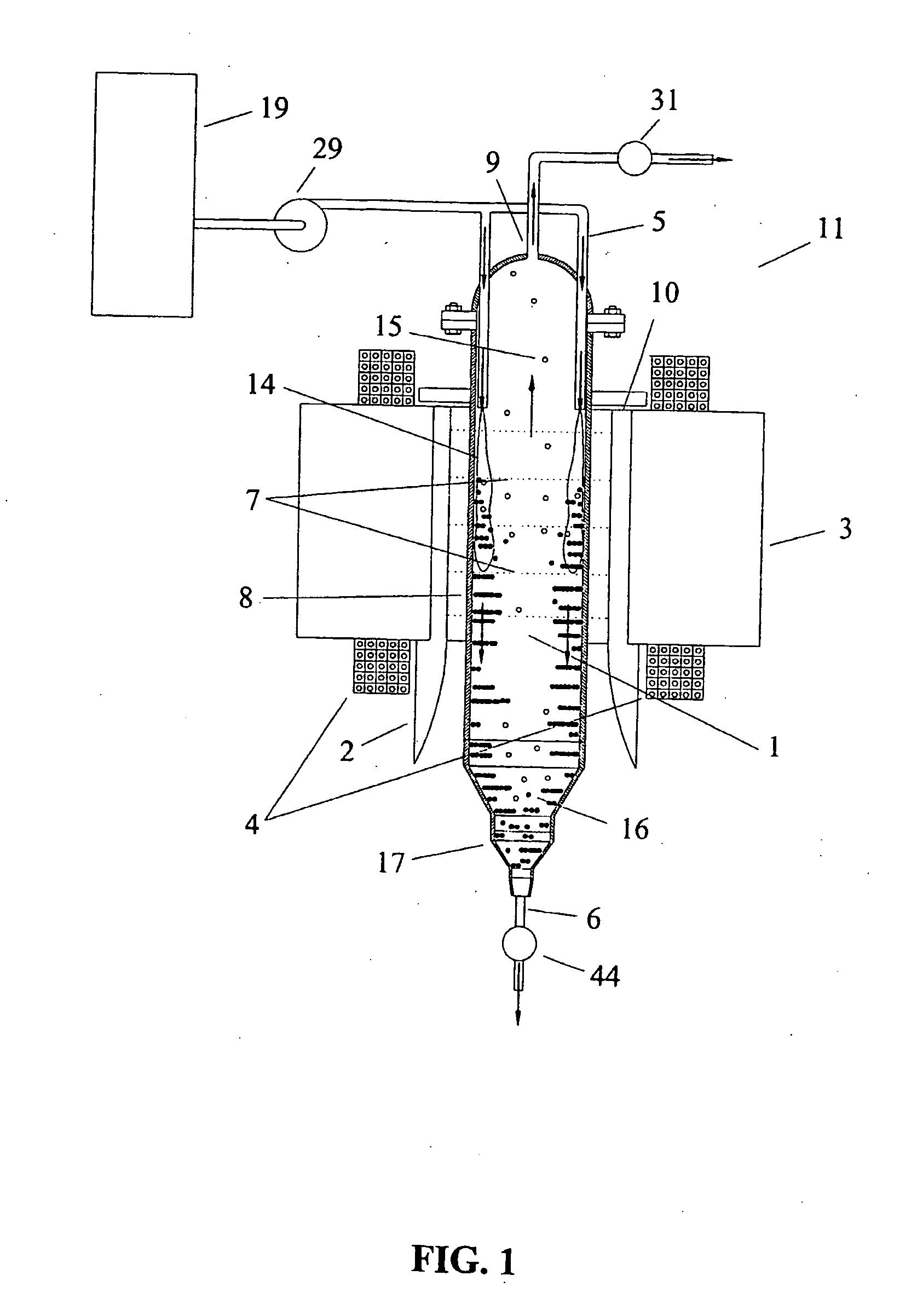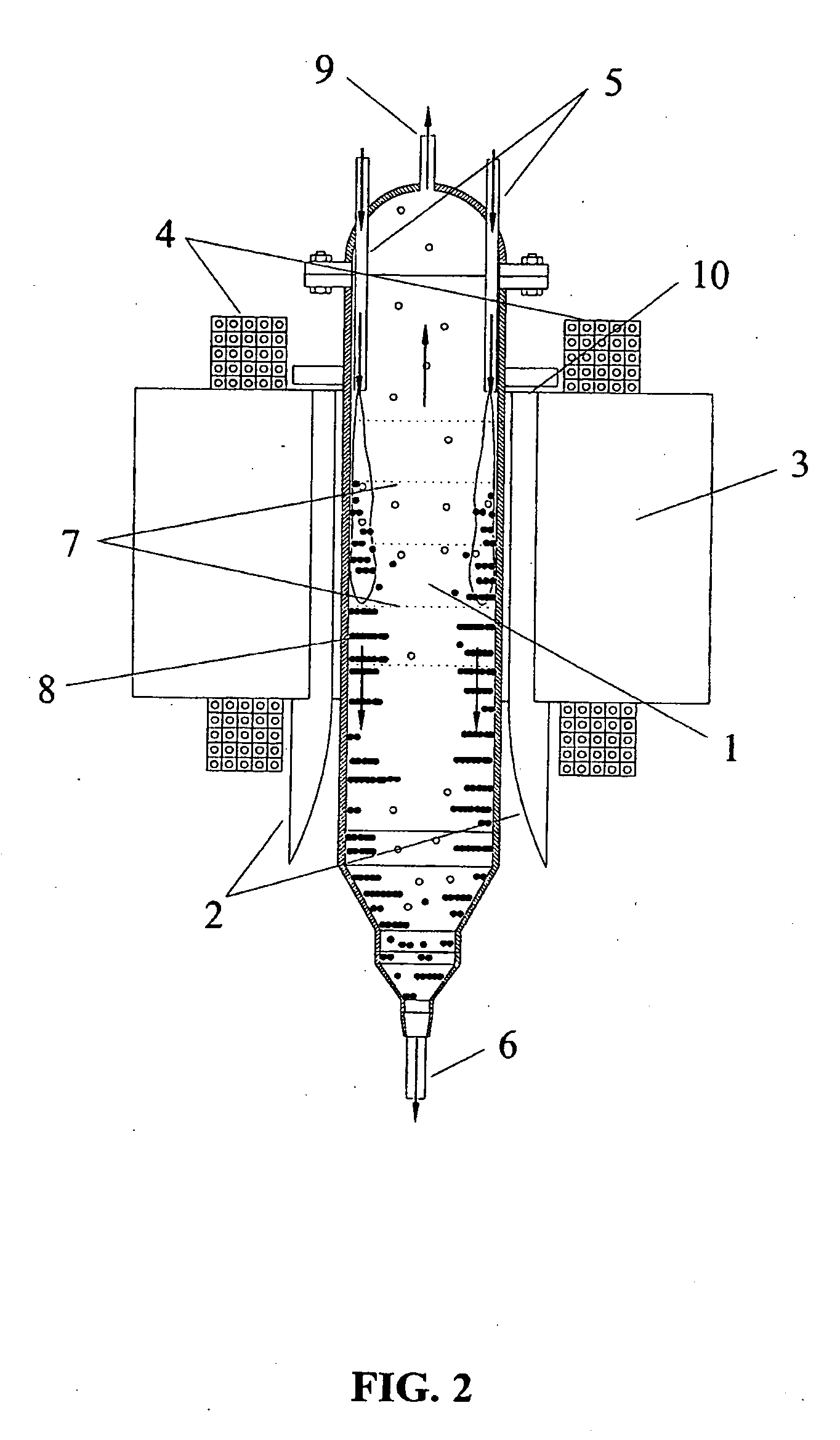Apparatus and method for continuous separation of magnetic particles from non-magnetic fluids
a technology of magnetic particles and fluids, applied in the direction of separation processes, filtration separation, moving filter elements, etc., can solve the problems of high overflow of rich materials from the reactors employed, process and quasi-continuous versions of catalysts are plugged too quickly, and the application of fischer-tropsch is not well suited to it. , to achieve the effect of reducing frictional drag, reducing catalyst clogging, and increasing feed ra
- Summary
- Abstract
- Description
- Claims
- Application Information
AI Technical Summary
Benefits of technology
Problems solved by technology
Method used
Image
Examples
example 1
Typical Experiment
[0052]A slurry containing 21.45 wt. % catalyst was fed at the rate of 17.53 gpm into a 6-inch diameter separation vessel through two sets of down-directed feed lines located across from one another next to the elongated tapered poles of the electromagnet. A vessel with a 6-inch inside diameter was employed. The overall canister length was 21 inches from the top of the dome at the overflow port to the bottom of the straight section which terminated 5 inches below the bottom of the magnet return frame. The volume of the six inch canister is 10 liters. Each set of feed lines consisted of one ¾-inch outer diameter tube and two ½-inch tubes on either side of the ¾-inch inlet. The magnetic field was 2000 gauss. The underflow was withdrawn through a 2-inch pipe (nominal 2.067 inch inner diameter) at a rate of 16.1 gpm and contained 23.33 wt. % ash. The overflow was withdrawn through a ½-inch tube with 0.035-inch wall thickness at the rate of 1.43 gpm and contained 0.35 wt...
example 2
Magnetic Field Effects
[0055]The slurry was fed at an average rate of 11.3 gpm to a 6 inch diameter vessel through two ¾-inch outside diameter down-directed stainless pipes located next to the inside walls of the separation chamber adjacent to the magnet poles as described above. The pipe outlets open into the separation chamber at an elevation which is 3 inches below the top of the electromagnet return frame. The opening at the chamber overflow was ½-inch tubing; the opening at the underflow was nominally 1-inch pipe. The magnetic field strength was varied from the locked-in field of the electromagnet with no current in the energizing coils up to 2200 gauss. Valves were used to maintain a recycle ratio of approximately 11:12. The ash levels in the feed, underflow, and the overflow were measured. The percentage reduction in ash was calculated as % reduction=[(ash in feed−ash in overflow) / ash in feed]*100.
[0056]Results are given versus the applied magnetic field in Table I.
TABLE IEffe...
example 3
Flow Entrance Effects
[0058]The direction in which the slurry is introduced into the separation vessel is important. This is illustrated with measurements made using a 2-inch diameter separation vessel and shown in Table II. All measurements were made at 1000 gauss magnetic field strength.
TABLE IIEffects of Flow Entry DirectionOverflowUnderflowFeedFlowFlowFlowAshRateAshRateAshRateAshRecycleReduction(gpm)(wt %)(gpm)(wt %)(gpm)(wt %)Ratio(wt %)Tangential0.0120.970.17421.380.1920.0314.195.1Tangential0.0060.940.18219.870.1919.2630.395.1Down-Directed0.0410.940.25822.180.3019.306.495.2Down-Directed0.0400.860.31420.720.3518.488.095.4
[0059]Two flow configurations are shown, tangential and down-directed. In the tangential case, one ¼-inch inner diameter entry port is employed. It is located 3 inches above the bottom of the iron return frame of the electromagnet and makes a tangential entry into the separation vessel at 90 degrees with respect to the electromagnet poles. For the two down-direc...
PUM
| Property | Measurement | Unit |
|---|---|---|
| temperatures | aaaaa | aaaaa |
| velocity | aaaaa | aaaaa |
| density | aaaaa | aaaaa |
Abstract
Description
Claims
Application Information
 Login to View More
Login to View More - R&D
- Intellectual Property
- Life Sciences
- Materials
- Tech Scout
- Unparalleled Data Quality
- Higher Quality Content
- 60% Fewer Hallucinations
Browse by: Latest US Patents, China's latest patents, Technical Efficacy Thesaurus, Application Domain, Technology Topic, Popular Technical Reports.
© 2025 PatSnap. All rights reserved.Legal|Privacy policy|Modern Slavery Act Transparency Statement|Sitemap|About US| Contact US: help@patsnap.com



